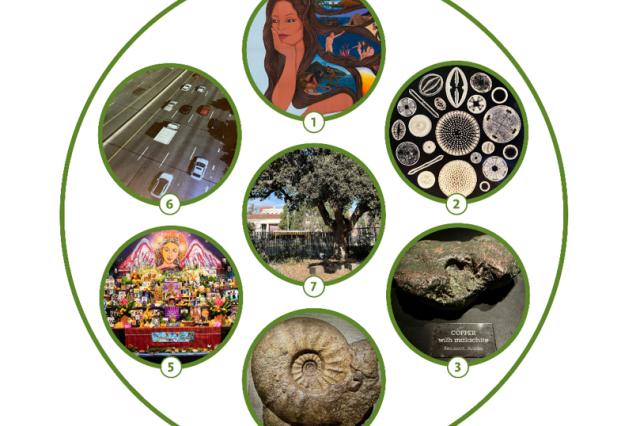
L.A. ON WHEELS SCAVENGER HUNT
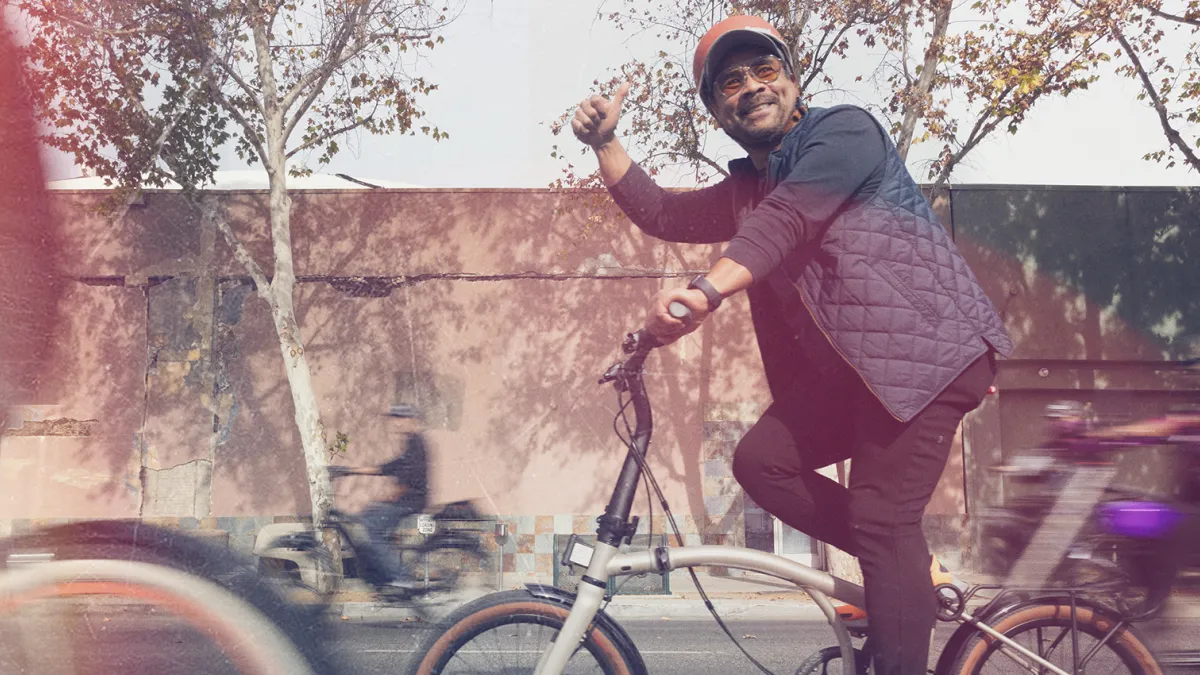
Watch the video below to hear Romel's story of movement, discovery, and connection.
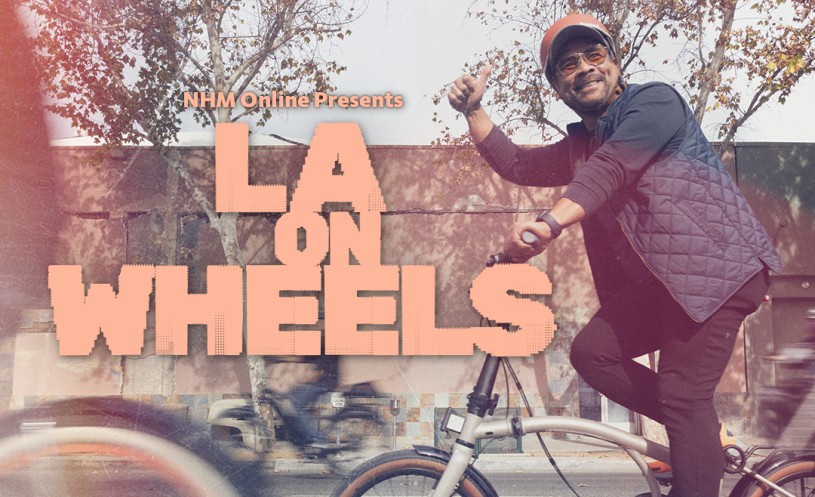
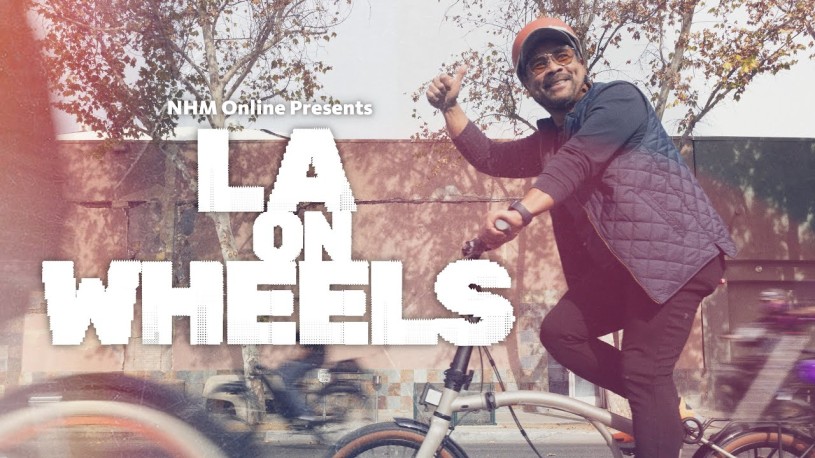
Romel's family immigrated from the Philippines to Long Beach in the early 1970s, part of a wave of new Angelenos seeking opportunity. He grew up in nearby Downey, studied Political Science at UCLA, and later earned a Master’s Degree in City and Regional Planning at UC Berkeley.
Romel’s first memory of riding a bike was the feeling of resilience. It gave him independence, expanded his sense of distance, and opened up his world. But rides along the L.A. River also raised questions—why were polluting refineries so close to the homes of low-income families and communities of color?
That early awareness led him into a career in environmental justice and sustainability, eventually bringing him full circle to CicLAvia, where mobility and equity meet.
Being an Angeleno is being open to diversity, open to culture, dynamic and culturally diverse communities—it’s part of who we are.
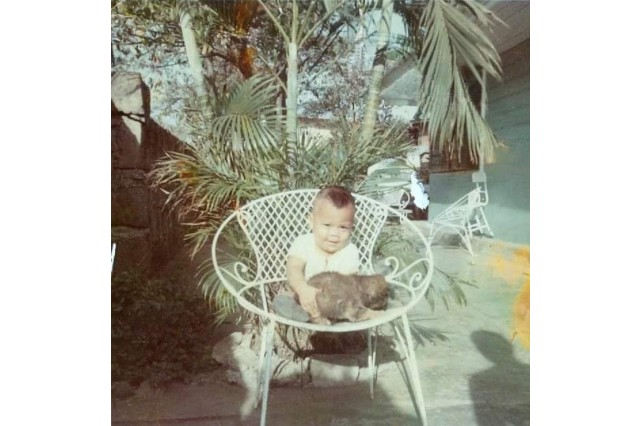
Romel Pascual
A one-year-old Romel is captured in a playful moment with the family dog, Jackie, outside their home in Manila, Philippines.
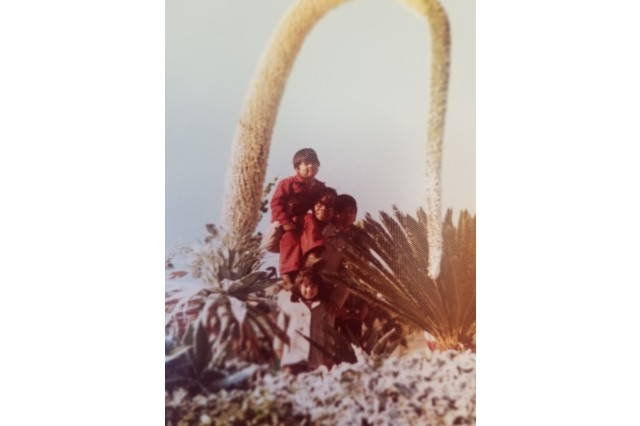
Romel Pascual
In the early 1970s, Romel's family of six emigrated from the Philippines to Long Beach, California. Romel, age six, poses atop his father's shoulders next to his older brother and younger sister.
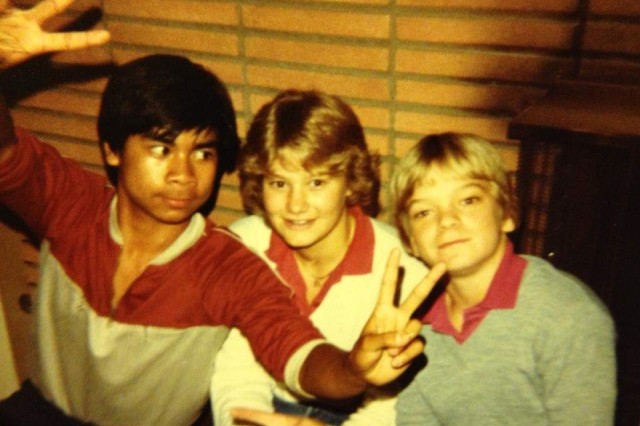
Romel Pascual
Romel hangs with his friends Rhonda and Tommy at South Middle School in Downey, CA.
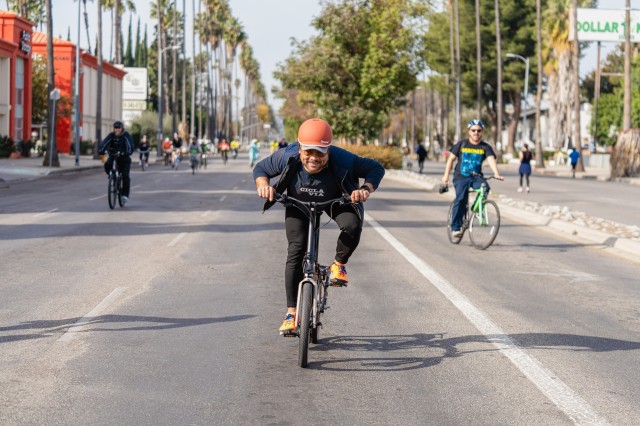
CicLAvia
As an adult, Romel still finds joy riding his bike around the streets of Los Angeles.
1 of 1
A one-year-old Romel is captured in a playful moment with the family dog, Jackie, outside their home in Manila, Philippines.
Romel Pascual
In the early 1970s, Romel's family of six emigrated from the Philippines to Long Beach, California. Romel, age six, poses atop his father's shoulders next to his older brother and younger sister.
Romel Pascual
Romel hangs with his friends Rhonda and Tommy at South Middle School in Downey, CA.
Romel Pascual
As an adult, Romel still finds joy riding his bike around the streets of Los Angeles.
CicLAvia
Before leading CicLAvia, Romel worked at the state, regional, and city levels, including serving as California's first Assistant Secretary for Environmental Justice and later as L.A.'s Deputy Mayor for Energy and Environment. There, he championed projects along the L.A. River and helped introduce a bold new idea: closing streets to cars so Angelenos could reclaim them.
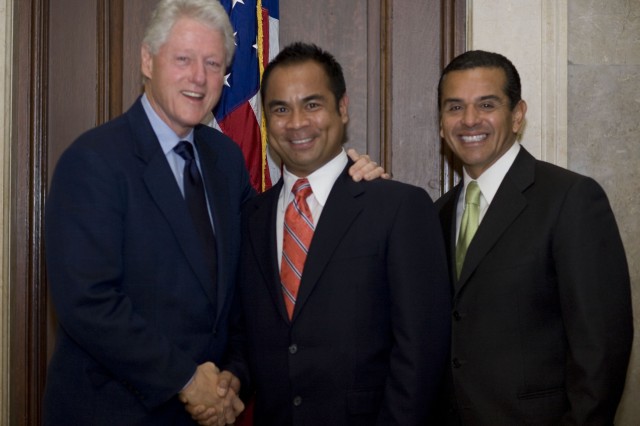
Romel Pascual
In 2009, as Deputy Mayor of Energy and Environment, Romel and Mayor Antonio Villaraigosa—seen here with President Bill Clinton—partnered with the Clinton Climate Initiative on an LED Street Lighting Energy Efficiency Program in Los Angeles. The largest program of its kind at the time aimed to save energy, reduce maintenance costs, and lower carbon emissions. The massive success of the program resulted in converting 210,000 decorative streetlights to more cost-effective and environmentally friendly LEDs around the city.
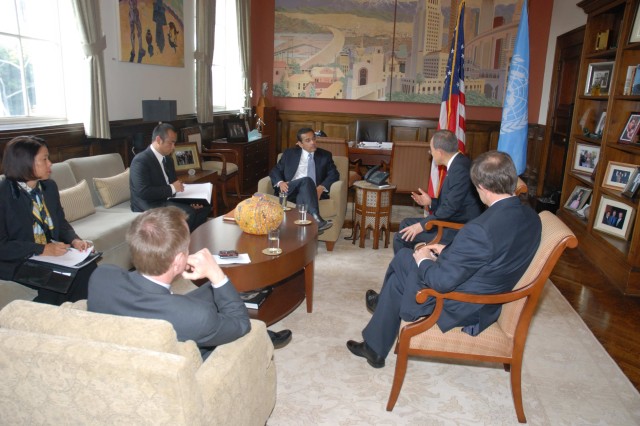
Romel Pascual
In 2010, Mayor Antonio Villaraigosa (facing center) welcomed the United Nations (UN) Secretary, General Ban Ki-moon (seated to the mayor's left) to discuss the UN's Creative Community Outreach Initiative. Romel (seated to the mayor's right) continues to work with global leaders to address Los Angeles's role in in finding solutions to environmental poverty and the global climate crisis.
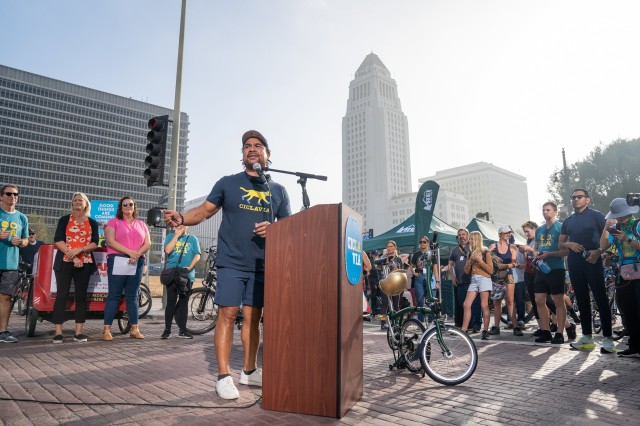
CicLAvia
As Executive Director of CicLAvia, Romel continues to advocate for making cities healthier and more sustainable through bike- and pedestrian-friendly streets.
1 of 1
In 2009, as Deputy Mayor of Energy and Environment, Romel and Mayor Antonio Villaraigosa—seen here with President Bill Clinton—partnered with the Clinton Climate Initiative on an LED Street Lighting Energy Efficiency Program in Los Angeles. The largest program of its kind at the time aimed to save energy, reduce maintenance costs, and lower carbon emissions. The massive success of the program resulted in converting 210,000 decorative streetlights to more cost-effective and environmentally friendly LEDs around the city.
Romel Pascual
In 2010, Mayor Antonio Villaraigosa (facing center) welcomed the United Nations (UN) Secretary, General Ban Ki-moon (seated to the mayor's left) to discuss the UN's Creative Community Outreach Initiative. Romel (seated to the mayor's right) continues to work with global leaders to address Los Angeles's role in in finding solutions to environmental poverty and the global climate crisis.
Romel Pascual
As Executive Director of CicLAvia, Romel continues to advocate for making cities healthier and more sustainable through bike- and pedestrian-friendly streets.
CicLAvia
On October 10, 2010—10/10/10—the first CicLAvia opened eight miles of streets in downtown Los Angeles. The night before, Romel could hardly sleep. Would anyone come? Were there even that many bikes in the city? By the end of the day, the Los Angeles Times reported 100,000 attendees and the event became known as “miles of smiles”.
People’s behavior changes when the ways we move around our city are more fun, less time consuming, and less stressful.
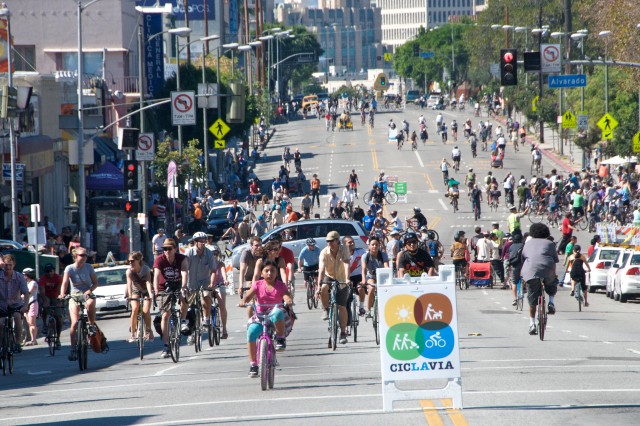
CicLAvia
CicLAvia can trace its roots to Bogotá, Colombia, where ciclovía events have been transforming city streets into car-free public spaces since the 1970s. In 2009, Los Angeles organizers visited Bogotá to see the idea in action, before presenting their L.A. version to then-Deputy Mayor, Romel Pascual. As he looked out over the crowd at CicLAvia's very first event, Romel recalls feeling a "sense of magic" at the sight of the community enjoying open streets together.
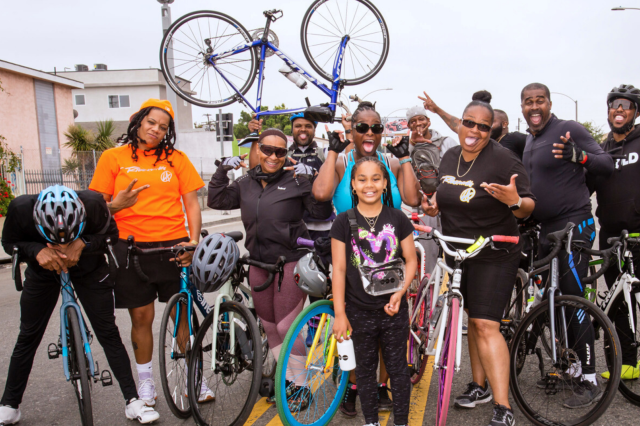
CicLAvia
The joy Romel feels on a bike is shared my many CicLAvia participants. Since the first event in 2010, it's estimated that 2 million people have taken part in CicLAvia events across Los Angeles—many of whom are repeat participants, bringing family and friends with them to share in the fun.
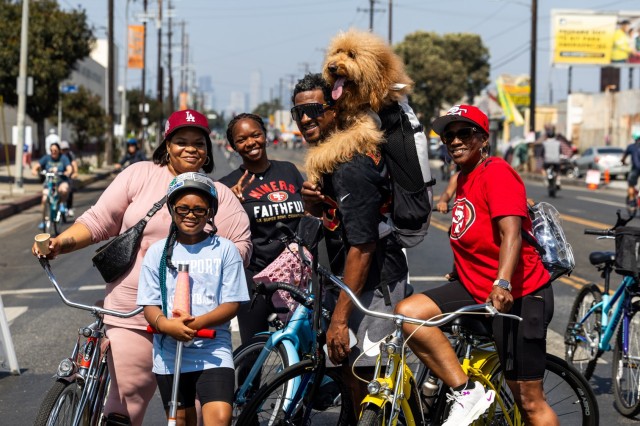
Brian Feinzimer
CicLAvia's "miles of smiles" extend to more than just people—L.A.'s open streets are enjoyed by four-legged friends too when Angelenos bring their dogs along for the ride.
1 of 1
CicLAvia can trace its roots to Bogotá, Colombia, where ciclovía events have been transforming city streets into car-free public spaces since the 1970s. In 2009, Los Angeles organizers visited Bogotá to see the idea in action, before presenting their L.A. version to then-Deputy Mayor, Romel Pascual. As he looked out over the crowd at CicLAvia's very first event, Romel recalls feeling a "sense of magic" at the sight of the community enjoying open streets together.
CicLAvia
The joy Romel feels on a bike is shared my many CicLAvia participants. Since the first event in 2010, it's estimated that 2 million people have taken part in CicLAvia events across Los Angeles—many of whom are repeat participants, bringing family and friends with them to share in the fun.
CicLAvia
CicLAvia's "miles of smiles" extend to more than just people—L.A.'s open streets are enjoyed by four-legged friends too when Angelenos bring their dogs along for the ride.
Brian Feinzimer
Since that day, CicLAvia has grown into the largest open streets event in the United States. Nearly 2 million participants have explored more than 325 miles of car-free streets across 70 neighborhoods. About 40% of attendees are first-timers, making every route a new wave of discovery.
Along the routes, CicLAvia's impacts are measurable: local businesses see sales rise, crime drops, and air quality improves. But the real legacy is how it changes the way people feel about their city. Streets once seen only as traffic corridors become spaces for art, food, music, and connection.
Moving forward, what we do, how we work on streets, how we engage on streets, we're going to be known for joyful traffic on wheels.
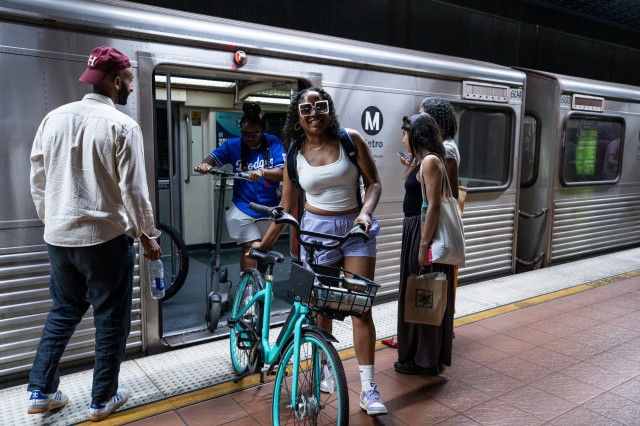
Jon Endow
L.A. Metro’s support for CicLAvia extends beyond funding: on event days the agency reports system-wide gains, including more than 10% higher rail ridership and increased day-pass sales.
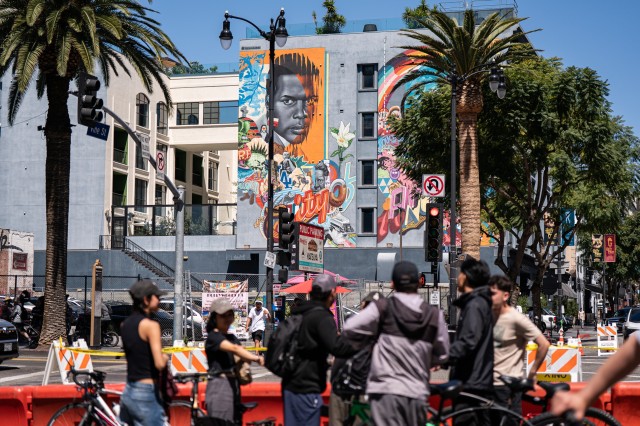
Jon Endow
Romel describes CicLAvia as “listening to the streets rather than looking at the streets.” With cars temporarily gone, the corner of Hollywood Blvd. & Vine St. becomes a stage for discovery and people find themselves—sometimes for the first time—being tourists in their own city.
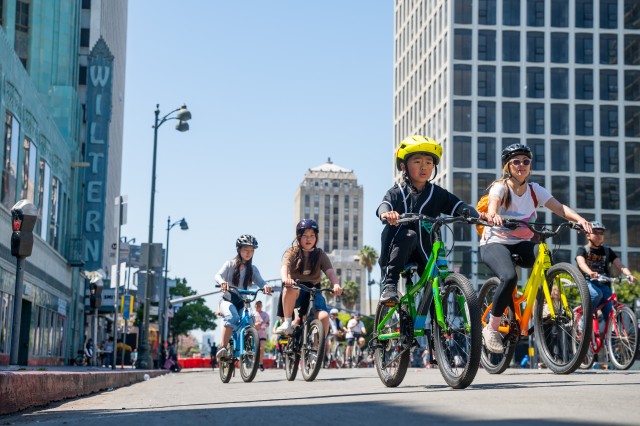
Jonathan Moore
Romel emphasizes that Los Angeles is a city of over 120 distinct neighborhoods, each with its own history, culture, language, and identity. CicLAvia respects these differences while weaving them together into a collective tapestry. “We’re all about community,” Romel says.
1 of 1
L.A. Metro’s support for CicLAvia extends beyond funding: on event days the agency reports system-wide gains, including more than 10% higher rail ridership and increased day-pass sales.
Jon Endow
Romel describes CicLAvia as “listening to the streets rather than looking at the streets.” With cars temporarily gone, the corner of Hollywood Blvd. & Vine St. becomes a stage for discovery and people find themselves—sometimes for the first time—being tourists in their own city.
Jon Endow
Romel emphasizes that Los Angeles is a city of over 120 distinct neighborhoods, each with its own history, culture, language, and identity. CicLAvia respects these differences while weaving them together into a collective tapestry. “We’re all about community,” Romel says.
Jonathan Moore
During the pandemic, CicLAvia paused its events but continued its mission through outreach into underserved communities of color. That period reinforced the idea that CicLAvia is not just about biking—it’s about civic engagement and rethinking the role of city streets.
Fifteen years after it's first 10/10/10 event, CicLAvia continues to create opportunities for people to explore areas they may have once avoided, to support businesses they didn’t know existed, and to share culture across geographic and social divides. For Romel, each event is a vision of civic life: a moving celebration of a city defined by its diversity.
CicLAvia opens the streets to us as individuals to explore neighborhoods without physical barriers. It allows us to experience community.
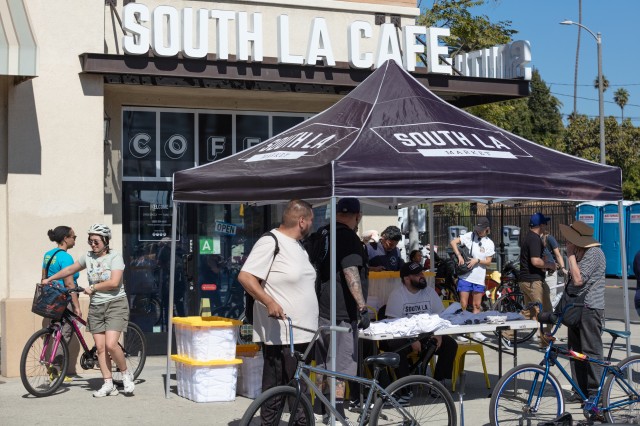
Laura Rudich
CicLAvia recognizes that working with local businesses, like South L.A. Cafe in West Adams, not only supports the local economy, it strengthens it.
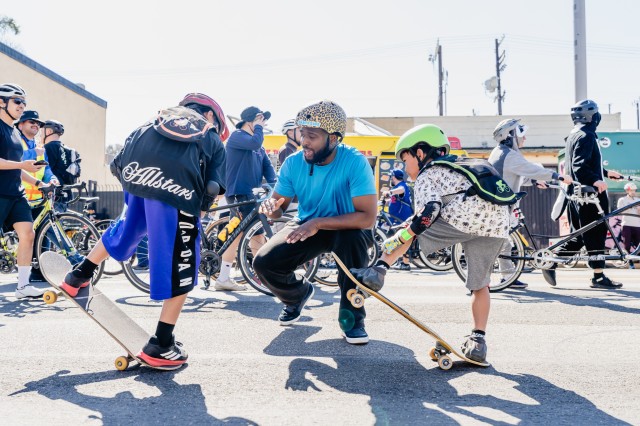
Farah Sosa
Community-based organizations, like The Skateside, share CicLAvia's goal of bringing community together by expanding urban parks. Lemar Betts, co-founder of The Skateside, teaches skateboarding fundamentals to two young CicLAvia attendees.
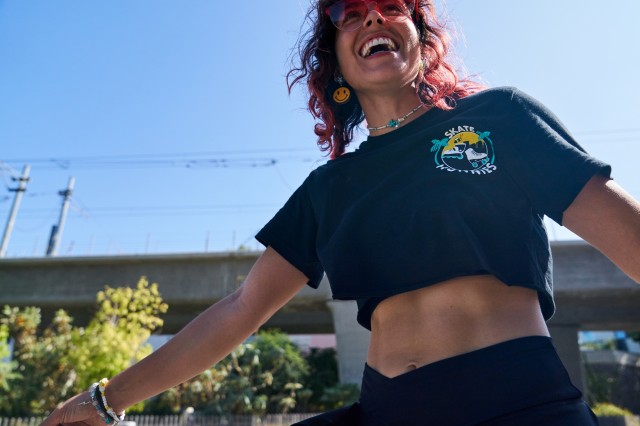
Trevor Smith
CicLAvia welcomes all forms of non-car traffic to its events—whether your on a bike, skateboard, or your own two feet—all are welcome. The Skate Hunnies, the largest roller skate community in L.A., often make an appearance to promote safer streets for skaters and foster a supportive community that thrives on joy and shared experiences.
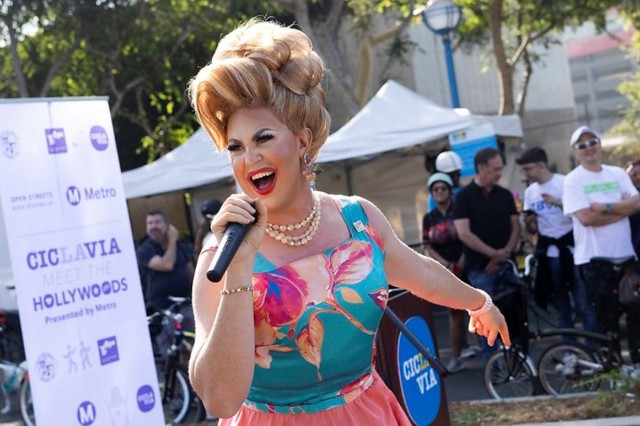
CicLAvia
CicLAvia celebrates L.A.'s diversity by connecting communities that highlight the multicultural reality of the city. Drag Queen Story Hour, hosted by queens like Pickle, Drag Laureate of West Hollywood, are popular CicLAvia events that promote community safety initiatives for all Angelenos.

CicLAvia
Car-free streets welcome more than just bicycles. The Compton Cowboys and Compton Junior Equestrians ride into CicLAvia events to show how safer streets also support L.A.’s horseback-riding culture—a community often overlooked but one rooted in more than two centuries of the city’s western heritage.
1 of 1
CicLAvia recognizes that working with local businesses, like South L.A. Cafe in West Adams, not only supports the local economy, it strengthens it.
Laura Rudich
Community-based organizations, like The Skateside, share CicLAvia's goal of bringing community together by expanding urban parks. Lemar Betts, co-founder of The Skateside, teaches skateboarding fundamentals to two young CicLAvia attendees.
Farah Sosa
CicLAvia welcomes all forms of non-car traffic to its events—whether your on a bike, skateboard, or your own two feet—all are welcome. The Skate Hunnies, the largest roller skate community in L.A., often make an appearance to promote safer streets for skaters and foster a supportive community that thrives on joy and shared experiences.
Trevor Smith
CicLAvia celebrates L.A.'s diversity by connecting communities that highlight the multicultural reality of the city. Drag Queen Story Hour, hosted by queens like Pickle, Drag Laureate of West Hollywood, are popular CicLAvia events that promote community safety initiatives for all Angelenos.
CicLAvia
Car-free streets welcome more than just bicycles. The Compton Cowboys and Compton Junior Equestrians ride into CicLAvia events to show how safer streets also support L.A.’s horseback-riding culture—a community often overlooked but one rooted in more than two centuries of the city’s western heritage.
CicLAvia
For Romel, “L.A. on Wheels” isn’t about congestion—it's about joy. “At CicLAvia, happy traffic exists,” he says. “It’s a party with purpose.”
Riding a bike as a child gave Romel freedom; now he sees that same spark in thousands of Angelenos at each CicLAvia event. With cars gone, the pavement becomes a stage for discovery: neighbors walking together, children learning to ride, skaters gliding by. On these days, the wheels of Los Angeles are not barriers but bridges—ways to connect communities, explore new neighborhoods, and imagine the city differently.
"Joy is a human right,” Romel says. "Just as we deserve clean air, safe housing, and education, we also deserve moments of joy that improve our quality of life."
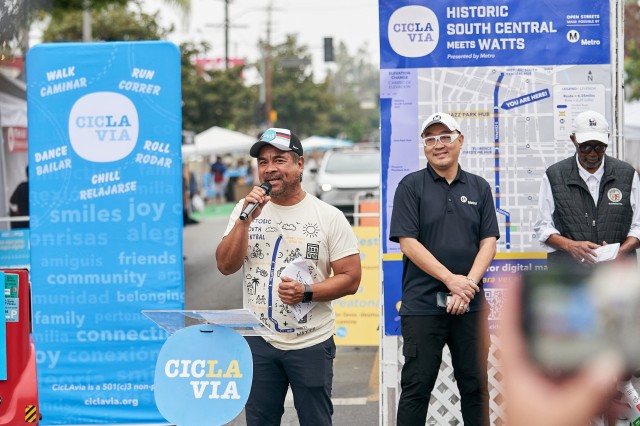
CicLAvia
Romel is extremely proud of the work CicLAvia has done—and will continue to do—to turn miles of L.A. streets into a temporary public parks that build an inclusive community around all modes of transportation and mobility.
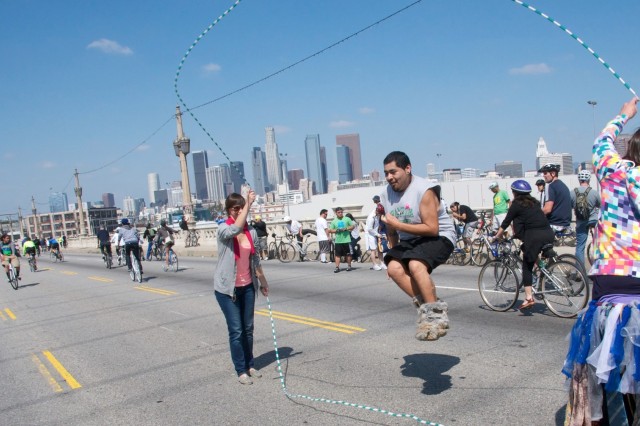
CicLAvia
Los Angeles is often imagined through its cars—four wheels at a time, flowing (or stuck) on its massive freeways. But CicLAvia offers a different picture: inclusive and sustainable public gatherings for all to enjoy.
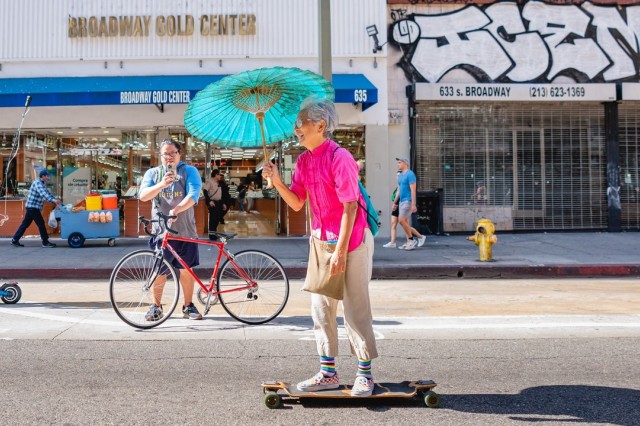
CicLAvia
Both CicLAvia and L.A. on Wheels are about reimagining urban life not as something stressful and isolating, but as playful, collective, and healing.
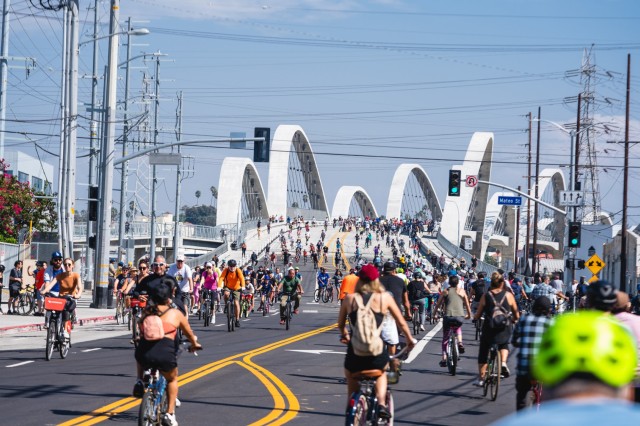
CicLAvia
Much like the iconic 6th Street Bridge, CicLAvia is now a well-established feature of life in Los Angeles.
1 of 1
Romel is extremely proud of the work CicLAvia has done—and will continue to do—to turn miles of L.A. streets into a temporary public parks that build an inclusive community around all modes of transportation and mobility.
CicLAvia
Los Angeles is often imagined through its cars—four wheels at a time, flowing (or stuck) on its massive freeways. But CicLAvia offers a different picture: inclusive and sustainable public gatherings for all to enjoy.
CicLAvia
Both CicLAvia and L.A. on Wheels are about reimagining urban life not as something stressful and isolating, but as playful, collective, and healing.
CicLAvia
Much like the iconic 6th Street Bridge, CicLAvia is now a well-established feature of life in Los Angeles.
CicLAvia
Interested in experiencing L.A. when no cars are allowed? Check out when the next CicLAvia ride is taking place—they could be rolling through your neighborhood soon! Do you know another Angeleno who connects with their community on wheels? We want to hear from you! Join the conversation on social media and tag us @NHMLA with #LAonWheels.